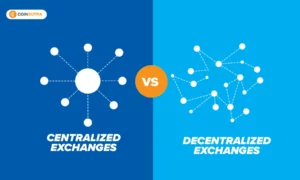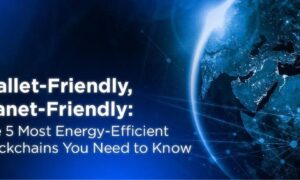What Is a Layer-1 Blockchain?
Layer 1 blockchain is defined as a set of solutions implemented on the base protocol of a blockchain in order to improve its functionality and scalability. There are two most common layer-1 solutions, and these are the consensus protocol changes as well as sharding.
Even projects like Ethereum are moving from older PoW consensus protocols to an energy-efficient PoS protocol.
The most common layer-1 scalability method is Sharding. What does Sharding do? Well, it simply breaks transactions into small data sets which are known as “shards” which can be processed by the blockchain network parallel instead of making a network sequentially work on each transaction.
One of the pros when it comes to layer-1 solutions is that there is no need to add anything on top of the existing infrastructure.
Use case
IBM and the global food control platform
In late 2018, IBM launched the Food Trust platform to help companies fight to counterfeit and sell near-expiration dates on time. Manufacturers, suppliers, and sellers of products connect to the platform to monitor the origin and delivery times and verify product certifications. Companies such as Nestle, Unilever, Walmart, and Carrefour supermarket chains have already joined the platform. It costs them thousands of dollars but helps them save hundreds of thousands.
Sberbank and supply crediting
Factoring is a type of credit service that banks often provide to wholesalers. For example, suppliers first ship goods to a large retail chain, but they receive money for it only after a couple of months. So that the supplier does not sit without money for this period, the bank pays with him immediately, and in the future, it takes money from the trading network with interest.
Sberbank Factoring and M.Video have created a common platform for data exchange. She reduced the time to reconcile shipping and receipt documents to a few minutes. As a result, the bank saves on paperwork, and suppliers receive money faster. By the end of 2017, the platform was used by every fifth supplier of Mà.Video, and it was opened for other banks and factoring companies.
Sweden: land transactions without unnecessary visits to the notary
Since 2016, the local telecom operator, IT company, banks and the cadastral chamber have been testing the execution of land rights transactions through a distributed network on the blockchain. Once the documents are uploaded, the parties can continue to exchange their verified electronic copies without contacting notaries and without wasting time sending paper copies. Banks record and enter the fact of payment into the system if the transaction is financial. This reduces the time and costs at all stages of the transaction. In the future, the country plans to transfer all real estate transactions to blockchain – according to forecasts, this will save up to 100 million euros per year.
The success of Layer1 Blockchains, their ecosystem, and consensus mechanism
Ethereum
For decades, these mechanisms have been used to establish consensus among database nodes, application servers, and other enterprise infrastructure. In recent years, new consensus protocols have been invented to allow crypto-economic systems, such as Ethereum, to agree on the state of the network.
A consensus mechanism in a crypto-economic system also helps prevent certain kinds of economic attacks. In theory, an attacker can compromise consensus by controlling 51% of the network. Consensus mechanisms are designed to make this “51% attack” unfeasible. Different mechanisms are engineered to solve this security problem differently. [ref. ethereum.org]
Ethereum, like Bitcoin, currently uses a proof-of-work (PoW) consensus protocol but soon gonna be shifting to PoS
Unlike Ethereum, Solana has few new features such as
- Proof of History (POH)
- Tower BFT
- Turbine
- Gulf Stream
- Sealevel
- Pipelining
- Cloudbreak
- Archivers
Proof of Work systems like Bitcoin and Ethereum support about 10 transactions per second (TPS). Practical Byzantine Fault Tolerance-based (PBFT) Proof of Stake (PoS) systems like Tendermint support about 1,000 TPS with 100–200 nodes. Solana, a PBFT-like PoS blockchain, supports upwards of 50,000 TPS with over 200 nodes on current testnet iterations, making it the most performant blockchain and the world’s first web-scale decentralized network.
Since its inception, the Solana team — comprised of pioneering technologists from Qualcomm, Intel, Netscape, and Google—has focused on building the tech required for Solana to function with these groundbreaking performance standards.
Another super crazy innovation is done by POLKADOT
Eventual consensus means that at some point in the future, all nodes will agree on the truthfulness of one set of data. This eventual consensus may take a long time and will not be able to be determined how long it will take ahead of time. However, finality gadgets such as GRANDPA (GHOST-based Recursive ANcestor Deriving Prefix Agreement) or Ethereum’s Casper FFG (the Friendly Finality Gadget) are designed to give stronger and quicker guarantees on the finality of blocks – specifically, that they can never be reverted after some process of Byzantine agreements has taken place. The notion of irreversible consensus is known as provable finality.
So there are two protocols we use when we talk about the consensus protocol of Polkadot, GRANDPA, and BABE (Blind Assignment for Blockchain Extension). We talk about both of these because Polkadot uses what is known as hybrid consensus. Hybrid consensus splits up the finality gadget from the block production mechanism
New innovative Layer1 platform with promising future: Introducing Aurora Network
Aurora aims to become the pioneering platform in building an infrastructure for social networks, financial applications, and gaming while still delivering the “Community Values on Blockchain”. Aurora Network applies an innovative technology to improve and enhance the blockchain’s performance in terms of transaction speed, security, transparency, and scalability, which are prominent issues with the current Ethereum.
Governance in Aurora
Governance is critical to the development and adoption of any platform because – as with all other types of systems – Aurora will also face natural evolution and updates.
Aurora provides on-chain governance for:
- Critical parameters of the network where participants can vote on changes to the network
- Settle network upgrade decisions democratically
This enables the platform to effectively perform dynamic parameter optimization through a crowd oracle. However, unlike some other governance platforms out there, Aurora does not allow unlimited changes to arbitrary aspects of the system. Instead, only a predetermined number of parameters can be modified via governance, rendering the system more predictable and increasing safety.
Aurora Architecture
Aurora is designed to be a public permissioned chain pegged to many other networks. From an architecture standpoint, Aurora blockchains can be divided into three conceptual layers:
- Application: Responsible for updating the state given a set of transactions, i.e. processing transactions.
- Networking: Responsible for the propagation of transactions and consensus-related messages.
- Consensus: Enables nodes to agree on the current state of the system.
The state machine is the same as the application layer. It defines the state of the application and the state-transition functions. The other layers are responsible for replicating the state machine on all the nodes that connect to the network.
Industry Use Cases
Decentralized Finance (DeFi)
By leveraging Aurora’s powerful network, developers can build various financial applications with cross-chain compatibility which include Asset Issuance, Borrowing & Lending, DEXs, Derivatives, AMMs, P2P Payments, Insurance, Oracles, etc.
Social Networks
Centralized social networks are based on servers where all information provided by users is stored. This is how social media companies make money from advertising and statistics. The most famous example of a centralized social network is Facebook, Instagram, Youtube, Twitter, etc.
Aurora’s architecture opens up a new era for social networking where decentralization and complete privacy are guaranteed. With the platform’s blockchain mechanism, real-world users can be incentivized for connecting with others to chat, share hobbies, ideas, or make new friends.
Institutions, Enterprises, and Governments
Aurora is the best verifiable platform for institutions, enterprises, and governments. Launch assets, build applications and create subnets with complete control over your implementation with compliance, data security, and other rulesets built into the foundation.
- Asset Issuance & Trading
- Debt Financing
- Digital Identity
- Document Tracking
- Fund Management
- Insurance
- Intellectual Property
- Lending
- Real Estate
- Supply Chain
- Trade Finance
Non-Fungible Tokens (NFTs)
Mint your own NFTs in seconds for fees less than a cent. Digitally prove ownership, and streamline value flow. Create and share art, collectibles, and more with all the benefits and none of the downside.
- Art
- Certifications and Licenses
- Collectibles
- Credentials
- In-game Items
- Music
Conclusion
Decentralized social networks have provided another answer to data privacy and security. On federated social networks, users can create accounts without having to link to real-world identities, like email addresses or phone numbers. Furthermore, these networks often rely on public-key cryptography for account security, rather than relying on a single organization to protect user data.
By shifting to decentralized versions like Aurora, providing an infrastructure to a permissionless, secured and scalable platform which supports a wide range of applications such as social networks, businesses building or simply dApps will regain much of the power they lost when using centralized infrastructure.




































